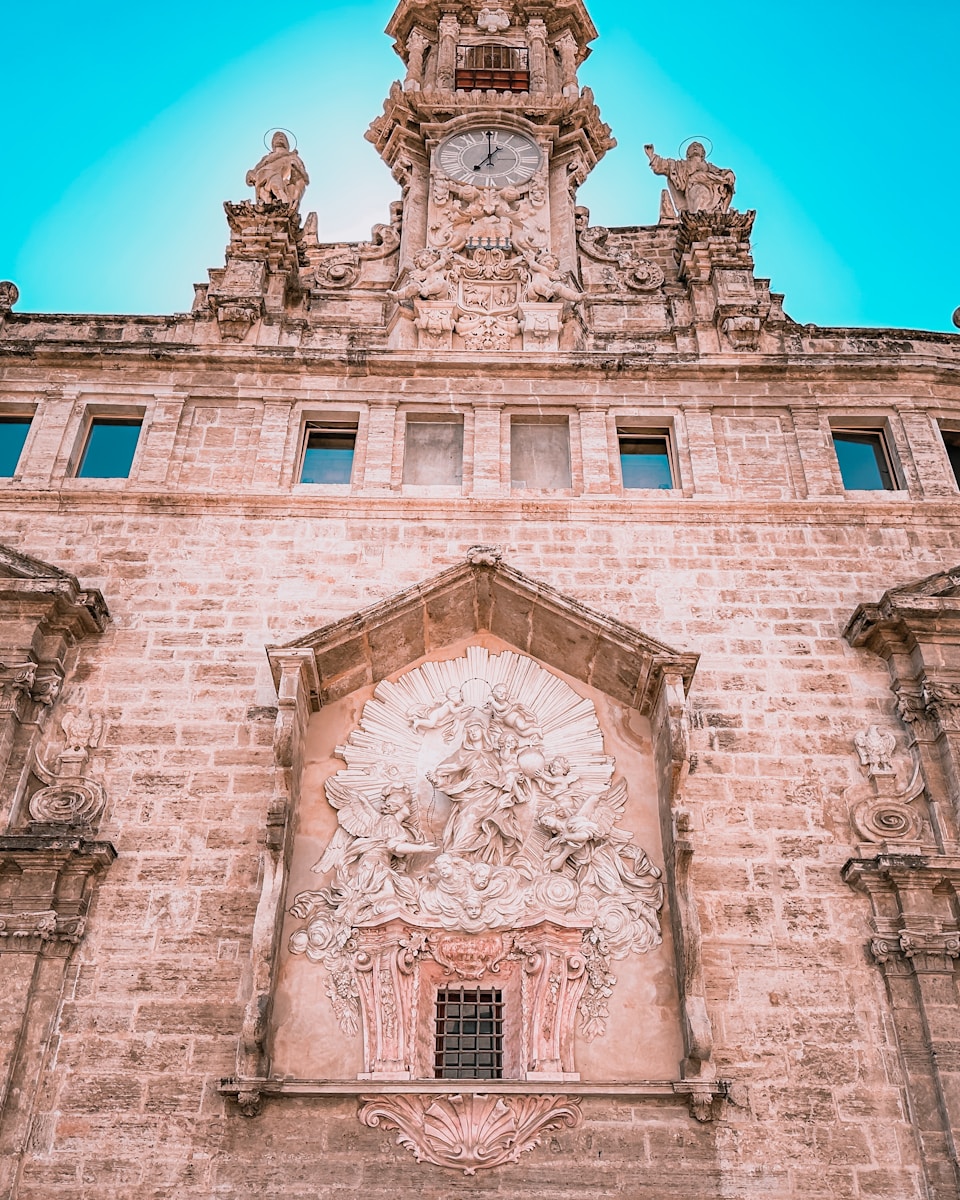Support our educational content for free when you purchase through links on our site. Learn more
What is the Hispanic Culture Known For? 10 Fascinating Insights to Discover! 🌍✨
Have you ever wandered through a vibrant street festival, the air thick with the aroma of sizzling tacos and the rhythm of salsa music echoing around you? If so, you’ve experienced just a taste of what Hispanic culture is all about! With over 62 million people in the U.S. alone, Hispanic culture is a rich tapestry woven from a multitude of traditions, languages, and histories. From the colorful celebrations of Día de los Muertos to the soulful expressions in literature and art, there’s so much to explore and appreciate.
In this article, we’ll take you on an engaging journey through 10 captivating aspects that define Hispanic culture, showcasing its diversity and global influence. You might be surprised to learn how deeply intertwined family values, culinary delights, and artistic expressions are within this vibrant community. Are you ready to dive in? Let’s uncover the treasures of Hispanic culture together!
Key Takeaways 🔑
- Diversity is Key: Hispanic culture encompasses a wide range of traditions, languages, and experiences, reflecting its rich history.
- Culinary Excellence: The food is a celebration of flavors, with dishes like tacos, ceviche, and paella offering a taste of regional specialties.
- Artistic Expression: Literature and art are powerful mediums that convey the Hispanic experience and contribute to global culture.
- Community Values: Family and community are at the heart of Hispanic life, fostering connections and support.
- Cultural Contributions: Hispanic heritage has made significant impacts in art, literature, music, and social justice movements.
If you’re eager to explore the culinary delights of Hispanic culture, check out our recommendations for Mexican cooking supplies and Hispanic literature to immerse yourself further! 🌮📚
- Mexican Cooking Supplies: Shop on Amazon | Shop on Walmart
- Hispanic Literature: Books by Gabriel García Márquez | Books by Isabel Allende
Table of Contents
- Quick Tips and Facts about Hispanic Culture
- A Deep Dive into the Rich History of Hispanic Culture
- Exploring the Vibrant Traditions and Celebrations
- Culinary Delights: What Makes Hispanic Cuisine Unique?
- Art and Literature: The Heartbeat of Hispanic Culture
- The Influence of Music and Dance in Hispanic Culture
- Language and Dialects: The Tapestry of Hispanic Communication
- Family and Community: The Cornerstones of Hispanic Life
- Hispanic Contributions to Global Society
- Terminology: Understanding Key Terms in Hispanic Culture
- Cultural Notes: Insights into Daily Life and Values
- Conclusion
- Recommended Links
- FAQ
- Reference Links
1. Quick Tips and Facts about Hispanic Culture 🌎🎶🌶️
Before we dive deep into the captivating world of Hispanic culture, here are some quick facts to whet your appetite:
- Did you know that the Hispanic population in the United States is larger than the entire population of Canada? 🤯 That’s right! With over 62 million people, the Hispanic community is a vibrant tapestry of traditions, languages, and flavors.
- Speaking of flavors, have you ever tried a perfectly made arepa? 😋 This Colombian delicacy, a type of cornmeal cake, can be filled with anything from cheese to shredded meat, offering a taste bud-tantalizing experience.
- And let’s not forget the music! 💃🕺 From the pulsating rhythms of salsa to the soulful melodies of flamenco, Hispanic music is a celebration of life, love, and everything in between.
These are just a few glimpses into the richness and diversity of Hispanic culture. So, buckle up and get ready for an unforgettable journey!
2. A Deep Dive into the Rich History of Hispanic Culture ⏳🗺️

The roots of Hispanic culture run deep, stretching back centuries and spanning continents. To truly understand its present, we must embark on a journey through its captivating past.
From the Iberian Peninsula to the Americas 🇪🇸➡️🌎
Our story begins in the Iberian Peninsula, where ancient civilizations, including the Romans, Visigoths, and Moors, left their indelible marks on the land. The Spanish language, a Romance language with roots in Latin, emerged from this melting pot of cultures.
With the arrival of Christopher Columbus in the Americas in 1492, a new chapter unfolded. The Spanish conquistadors, driven by ambition and the quest for gold, established colonies across the Americas, forever altering the course of history.
The Collision of Worlds: A Legacy of Cultural Fusion 💥
The encounter between the Spanish and the indigenous peoples of the Americas was a complex and often tumultuous one. It led to the exchange of ideas, customs, and traditions, resulting in a vibrant cultural fusion that continues to shape the Americas today.
The Spanish introduced their language, religion, and architectural styles, while adopting indigenous crops, culinary techniques, and musical influences. This intermingling of cultures gave birth to unique traditions and customs, from the syncretic religious practices of Latin America to the evolution of distinct musical genres like mariachi and tango.
Independence Movements and the Rise of National Identities ✊
The 19th century witnessed a wave of independence movements across Latin America, as colonies rose up to break free from Spanish rule. These revolutions, led by visionary figures like Simón Bolívar and José de San Martín, gave birth to new nations with their own distinct identities.
While Spanish influence remained strong, these newly independent nations forged their own paths, drawing upon their indigenous heritage and the experiences of their diverse populations. This period saw the emergence of national literatures, art movements, and musical styles that reflected the unique character of each country.
3. Exploring the Vibrant Traditions and Celebrations 🎉🎊
Hispanic culture is a vibrant tapestry woven with colorful threads of traditions and celebrations. From joyous fiestas to solemn religious observances, these events offer a glimpse into the heart and soul of the Hispanic people.
Fiestas: A Celebration of Life, Love, and Community 💃🎶
Fiestas, or festivals, are an integral part of Hispanic culture, offering a chance to come together with family and friends to celebrate life, love, and community. These lively events are often marked by music, dancing, colorful costumes, and delicious food.
One of the most famous fiestas is Carnival, a pre-Lenten celebration that explodes with color, music, and dance. From the elaborate parades of Rio de Janeiro to the vibrant street parties of Barranquilla, Carnival is a time to let loose and embrace the joy of life.
Other notable fiestas include Día de los Muertos (Day of the Dead), a celebration of life and death that honors deceased loved ones with altars, food offerings, and joyful remembrance; Las Fallas, a Valencian festival featuring giant, elaborate sculptures that are paraded through the streets and then burned in a spectacular bonfire; and Inti Raymi, a traditional Inca festival celebrating the sun god, Inti.
Religious Observances: Faith and Spirituality 🙏⛪️
Religion plays a significant role in the lives of many Hispanics. While Catholicism, introduced during the colonial period, remains the dominant faith, other religions, including Protestantism, Evangelicalism, and indigenous beliefs, are also practiced.
Religious observances, such as Christmas, Easter, and Holy Week, are marked by special masses, processions, and family gatherings. These events offer a time for reflection, prayer, and spiritual renewal.
Family Traditions: The Heart of Hispanic Culture 👨👩👧👦❤️
Family is paramount in Hispanic culture, and family traditions are cherished and passed down through generations. From weekly family dinners to annual holiday gatherings, these traditions strengthen family bonds and create lasting memories.
One cherished tradition is the quinceañera, a coming-of-age celebration for girls turning 15. This elaborate affair marks the transition from childhood to womanhood and is a testament to the importance placed on family and community.
4. Culinary Delights: What Makes Hispanic Cuisine Unique? 🌮🥘🍤
Prepare your taste buds for an explosion of flavors! Hispanic cuisine is a tantalizing fusion of indigenous ingredients, Spanish culinary traditions, and African influences, resulting in a diverse and delicious array of dishes that will leave you craving for more.
A Fiesta for the Senses: Bold Flavors and Vibrant Colors ✨🌶️
Hispanic cuisine is known for its bold flavors, vibrant colors, and use of fresh, locally sourced ingredients. From the fiery heat of chili peppers to the tangy zest of citrus fruits, Hispanic dishes are a symphony of tastes and textures that will tantalize your palate.
Regional Variations: A Culinary Journey Across Latin America 🌎✈️
Just as Hispanic culture is diverse, so too is its cuisine. Each region boasts its own unique culinary traditions and specialties, reflecting the local ingredients, history, and cultural influences.
- Mexico: Known for its tacos, burritos, enchiladas, and mole sauces, Mexican cuisine is a fiesta of flavors and textures.
- Peru: Home to a rich culinary heritage, Peru offers a diverse array of dishes, from ceviche, a refreshing dish of marinated seafood, to pachamanca, a traditional Andean feast cooked in an underground oven.
- Argentina: Renowned for its succulent grilled meats, Argentina is a carnivore’s paradise. Be sure to try the asado, a traditional barbecue featuring a variety of grilled meats.
- Spain: From paella, a saffron-infused rice dish, to tapas, small plates meant for sharing, Spanish cuisine is a delightful culinary adventure.
Sweet Indulgences: Desserts That Will Satisfy Your Sweet Tooth 🍰🍮
No Hispanic meal is complete without a sweet ending. From decadent flan to refreshing tres leches cake, Hispanic desserts are the perfect way to satisfy your sweet tooth.
5. Art and Literature: The Heartbeat of Hispanic Culture 🎨📚
Art and literature are integral to Hispanic culture, serving as powerful mediums for storytelling, cultural expression, and social commentary. From the vibrant colors of Frida Kahlo’s self-portraits to the magical realism of Gabriel García Márquez’s novels, Hispanic art and literature offer a window into the soul of a people.
A Tapestry of Styles and Influences 🖼️
Hispanic art is a rich tapestry of styles and influences, reflecting the region’s indigenous heritage, colonial past, and modern experiences. From the intricate patterns of pre-Columbian art to the bold colors and social realism of Mexican muralism, Hispanic art is as diverse as the cultures it represents.
Literary Giants: Voices That Resonate Across Generations 🖋️
Hispanic literature boasts a long and illustrious tradition, with writers who have captivated readers worldwide with their evocative prose, magical realism, and insightful social commentary.
- Gabriel García Márquez: Colombian novelist and Nobel laureate, known for his masterpiece, “One Hundred Years of Solitude,” a sweeping saga of a family and their town, Macondo.
- Pablo Neruda: Chilean poet and Nobel laureate, celebrated for his passionate love poems and politically charged verses.
- Isabel Allende: Chilean-American writer, known for her captivating novels that blend history, magic, and love, such as “The House of the Spirits.”
- Jorge Luis Borges: Argentine short-story writer, essayist, and poet, celebrated for his fantastical tales and labyrinthine narratives.
- Laura Esquivel: Mexican writer, known for her magical realism novel, “Like Water for Chocolate,” which weaves together food, love, and family history.
Art and Literature: A Reflection of the Hispanic Experience 🎭
Hispanic art and literature offer a profound reflection of the Hispanic experience, exploring themes of identity, family, love, loss, social justice, and the search for meaning in a complex world. Through their art, Hispanic artists and writers give voice to the joys, sorrows, and aspirations of their people, connecting across generations and cultures.
6. The Influence of Music and Dance in Hispanic Culture 🎶💃🕺
Music and dance are the heartbeat of Hispanic culture, pulsating with rhythm, passion, and a zest for life. From the sultry steps of tango to the infectious energy of salsa, Hispanic music and dance are an irresistible invitation to move your feet and let loose.
A Fusion of Rhythms: From Spain to the Americas 🇪🇸➡️🌎
Hispanic music is a vibrant fusion of rhythms and influences, drawing upon Spanish folk traditions, African rhythms, and indigenous musical styles. This melting pot of sounds has given birth to a dazzling array of genres, each with its own unique character and flavor.
Dance Your Worries Away: Salsa, Tango, Flamenco, and More 💃
Hispanic dance is just as diverse and captivating as its music, offering a range of styles to suit every taste and temperament. From the passionate embrace of tango to the fiery footwork of flamenco, Hispanic dance is an expression of joy, love, sorrow, and everything in between.
- Salsa: Originating in the Caribbean and spreading like wildfire throughout Latin America and beyond, salsa is a high-energy dance that will get your heart pumping.
- Tango: Born in the working-class neighborhoods of Buenos Aires, tango is a sensual and intimate dance that requires both technical skill and emotional connection.
- Flamenco: A passionate and expressive dance form from Andalusia, Spain, flamenco is characterized by its intricate footwork, hand gestures, and soulful singing.
- Merengue: Originating in the Dominican Republic, merengue is a lively and joyful dance that is perfect for any celebration.
- Bachata: A romantic and sensual dance from the Dominican Republic, bachata is known for its close embrace and smooth, flowing movements.
Music and Dance: The Soul of Hispanic Culture ✨
Music and dance are not merely forms of entertainment in Hispanic culture; they are deeply ingrained in the social fabric, serving as a means of expression, celebration, storytelling, and cultural preservation. Whether it’s a family gathering, a community fiesta, or a night out with friends, music and dance are an essential part of the Hispanic experience.
7. Language and Dialects: The Tapestry of Hispanic Communication 🗣️🌎
The Spanish language, with its melodic cadence and expressive flair, is the thread that connects the diverse tapestry of Hispanic cultures. Yet, within this linguistic unity lies a fascinating world of dialects, slang, and regional variations that reflect the rich history and cultural nuances of each Spanish-speaking community.
A Legacy of Empire: The Spread of Spanish Across the Globe 🇪🇸🗺️
The Spanish language, a Romance language with roots in Latin, embarked on its global journey with the Spanish Empire, spreading across the Americas, the Philippines, and parts of Africa. Today, Spanish is the official language in 20 countries and boasts over 500 million speakers worldwide, making it the second most spoken language in the world by native speakers.
A Symphony of Accents: Regional Variations and Dialects 🎶
While Spanish speakers from different countries can generally understand each other, the language is anything but monolithic. Each region has its own distinct accent, dialect, and slang, influenced by indigenous languages, historical events, and cultural exchanges.
- Caribbean Spanish: Known for its rapid-fire delivery, dropped consonants, and unique vocabulary, Caribbean Spanish is as vibrant and energetic as the region itself.
- Mexican Spanish: Influenced by indigenous languages like Nahuatl, Mexican Spanish features a distinctive rhythm and vocabulary, with words like “guajolote” (turkey) and “chapulín” (grasshopper) adding a unique flavor to the language.
- Argentine Spanish: Characterized by its Italian-influenced pronunciation, use of “vos” instead of “tú,” and distinctive slang, Argentine Spanish has a musicality and charm all its own.
- Spain Spanish: From the Castilian lisp to the Andalusian tendency to drop consonants, Spain Spanish encompasses a range of dialects, each with its own unique characteristics.
Beyond Words: Nonverbal Communication in Hispanic Culture 👋🫂
Communication in Hispanic culture extends beyond words, encompassing a rich tapestry of nonverbal cues that convey meaning, emotions, and social dynamics. From expressive hand gestures to warm embraces, understanding these nonverbal cues is key to navigating the nuances of Hispanic communication.
8. Family and Community: The Cornerstones of Hispanic Life 👨👩👧👦🏘️
Family and community are the bedrock of Hispanic culture, providing a strong sense of belonging, support, and identity. From large family gatherings to close-knit neighborhoods, Hispanics place a high value on relationships, celebrating life’s milestones together and offering unwavering support during challenging times.
Family First: A Deeply Ingrained Value ❤️
Family is paramount in Hispanic culture, extending beyond the immediate family to include grandparents, aunts, uncles, cousins, and even close friends who are considered part of the extended family. This strong emphasis on family fosters a deep sense of loyalty, love, and responsibility towards one another.
Celebrations of Life: Sharing Joy and Sorrow Together 🎉😭
From baptisms and first communions to weddings and quinceañeras, Hispanics celebrate life’s milestones with gusto, turning these occasions into joyous gatherings filled with music, dancing, delicious food, and the warmth of loved ones.
Community Ties: A Strong Support System 🤝
Beyond the family unit, Hispanics often forge strong bonds within their communities, whether it’s through their neighborhoods, churches, or cultural organizations. These community ties provide a sense of belonging, support, and shared identity, offering a helping hand during times of need and celebrating successes together.
9. Hispanic Contributions to Global Society 🌎🌟
Hispanic culture, with its rich history, vibrant traditions, and unwavering spirit, has made invaluable contributions to global society, enriching the world with its art, music, literature, cuisine, scientific advancements, and unwavering advocacy for social justice.
Artistic Expressions: A Global Tapestry of Creativity 🎨🎶📚
From the passionate rhythms of salsa and tango to the evocative canvases of Frida Kahlo and Diego Rivera, Hispanic artists have left an indelible mark on the world stage, captivating audiences with their creativity, passion, and unique perspectives.
Literary Giants: Shaping Global Literature 🖋️
Hispanic writers, from Gabriel García Márquez to Isabel Allende, have reshaped the landscape of global literature, introducing readers to the magic realism of Latin America, the complexities of the human experience, and the power of storytelling to transport us to different worlds and perspectives.
Culinary Delights: A Global Feast of Flavors 🌮🥘🍤
Hispanic cuisine, with its bold flavors, fresh ingredients, and diverse regional variations, has become a global phenomenon, tantalizing taste buds worldwide with its tacos, paella, ceviche, empanadas, and countless other culinary delights.
Scientific Advancements: Innovators and Pioneers 🚀🔬
Hispanics have made significant contributions to science, technology, engineering, and mathematics (STEM), with pioneers like Dr. Ellen Ochoa, the first Hispanic woman in space, and Dr. Mario Molina, a Nobel laureate in Chemistry, paving the way for future generations.
Champions for Social Justice: Voices for Equality and Change ✊
From César Chávez and Dolores Huerta’s tireless advocacy for farmworkers’ rights to Sonia Sotomayor’s groundbreaking appointment as the first Hispanic Supreme Court Justice, Hispanics have been at the forefront of the fight for social justice, equality, and a more just world for all.
10. Terminology: Understanding Key Terms in Hispanic Culture 🤔
Navigating the nuances of language is essential when discussing Hispanic culture. Let’s clarify some key terms to ensure clear and respectful communication.
Hispanic vs. Latino/a/x: What’s the Difference? 🤔
While often used interchangeably, “Hispanic” and “Latino/a/x” have distinct meanings:
- Hispanic: This term generally refers to people, cultures, and languages originating from Spain. It encompasses a broad spectrum of individuals, including those from Spain, Latin America, and the Caribbean.
- Latino/a/x: This term specifically refers to people, cultures, and languages originating from Latin America, encompassing countries in Central and South America and the Caribbean.
The choice of which term to use often depends on personal preference, regional variations, and the specific context. It’s always a good practice to ask individuals how they prefer to be identified.
Other Terms: Afro-Latino/a/x, Latinx, and More 🌎
Within the broader umbrella of Hispanic and Latino/a/x identities, there are further distinctions that reflect the diverse experiences and heritages within these communities:
- Afro-Latino/a/x: This term acknowledges the African ancestry of many Latinos, recognizing the historical and cultural contributions of the African diaspora in Latin America and the Caribbean.
- Latinx: This gender-neutral term is gaining popularity as a more inclusive alternative to “Latino” and “Latina.” It aims to encompass individuals who identify outside the gender binary.
11. Cultural Notes: Insights into Daily Life and Values 🌞🤝
Understanding the nuances of daily life and values is key to appreciating the richness of Hispanic culture. Here are some insights to guide you:
Personal Space: Warmth and Closeness ✨
Hispanics are generally more comfortable with physical touch and closer proximity during conversations than some other cultures. This warmth and closeness reflect the importance placed on relationships and personal connections.
Respect for Elders: A Cornerstone of Family Values 🙏👴👵
Respect for elders is deeply ingrained in Hispanic culture. Elders are revered for their wisdom, experience, and guidance, and their opinions are highly valued within the family and community.
Importance of Food: Sharing Meals and Creating Memories 🍽️
Food plays a central role in Hispanic culture, extending beyond mere sustenance to become a celebration of life, family, and tradition. Meals are often shared with loved ones, creating opportunities for connection, laughter, and the passing down of cherished recipes and stories.
Hospitality: Welcoming Guests with Open Arms 🤗
Hospitality is a cornerstone of Hispanic culture. Guests are welcomed into homes with open arms and treated with warmth, generosity, and a genuine desire to make them feel comfortable and appreciated.
Conclusion 🎉🌟

Hispanic culture is a vibrant tapestry woven from a rich history, diverse traditions, and a deep sense of community. From the captivating rhythms of its music and dance to the mouthwatering flavors of its cuisine, this culture offers a wealth of experiences that resonate with people around the globe. Whether you’re celebrating a family fiesta, diving into a novel by a renowned Hispanic author, or savoring a plate of authentic tacos, you’re participating in a legacy that has shaped the world in profound ways.
Recap of Key Points:
- Diversity: Hispanic culture encompasses a wide range of traditions, languages, and experiences.
- Culinary Excellence: The food is not just delicious; it’s a reflection of the region’s history and influences.
- Artistic Expression: Literature and art are powerful mediums that convey the Hispanic experience and contribute to global culture.
- Community Values: Family and community are at the heart of Hispanic life, fostering connections and support.
If you’re looking to dive deeper into this amazing culture, we wholeheartedly recommend exploring local Hispanic restaurants, attending cultural events, or picking up a book by a Hispanic author. There’s a world of richness waiting for you to discover!
Recommended Links 🛍️📚
- 👉 Shop Hispanic Cuisine Essentials:
- Mexican Cooking Supplies: Amazon | Walmart | Mexican Food Official Website
- Hispanic Literature: Books by Gabriel García Márquez on Amazon | Books by Isabel Allende on Amazon
FAQ ❓

What are the five values of Latino culture? 🌟
Latino culture is rich with values that shape the community’s identity. Here are five key values:
- Familism: Family is the cornerstone of Latino culture, emphasizing close-knit relationships and loyalty.
- Respect: This includes respect for elders, traditions, and social hierarchies, which is deeply ingrained in daily interactions.
- Community: A strong sense of belonging and support within the community is vital, often leading to collective celebrations and mutual aid.
- Faith: Religion, particularly Catholicism, plays a significant role in cultural practices and community gatherings.
- Cultural Pride: There is a deep appreciation for cultural heritage, which is celebrated through music, dance, festivals, and culinary traditions.
What defines Hispanic culture? 🏛️
Hispanic culture is defined by its language (primarily Spanish), shared history, and cultural practices that stem from the Iberian Peninsula and indigenous influences in Latin America. It encompasses a wide range of traditions, art forms, and values that reflect a collective identity shaped by historical events, migration, and cultural exchanges.
What is a characteristic of Hispanic culture? 🎭
A defining characteristic of Hispanic culture is its emphasis on family and community. Relationships are central to social life, and gatherings often revolve around family events, celebrations, and communal activities. This strong familial bond fosters a sense of belonging and support, creating a network of care that is vital to the Hispanic experience.
What is Hispanic heritage known for? 🌍
Hispanic heritage is known for its rich contributions to art, literature, music, and cuisine. From the vibrant murals of Diego Rivera to the literary masterpieces of Gabriel García Márquez, Hispanic culture has left an indelible mark on the global stage. Additionally, the culinary delights, such as tacos, empanadas, and paella, showcase the diverse flavors and ingredients that define this heritage.
Reference Links 🔗
- Hispanic Heritage Month – National Park Service
- Hispanic Culture – Latino.si.edu
- Cultural Traditions – Hispanic Month™
- Hispanic Heritage Month Events – Hispanic Month™
By exploring these resources, you can deepen your understanding of the vibrant and diverse Hispanic culture and its significant contributions to our world. Happy exploring! 🌟



